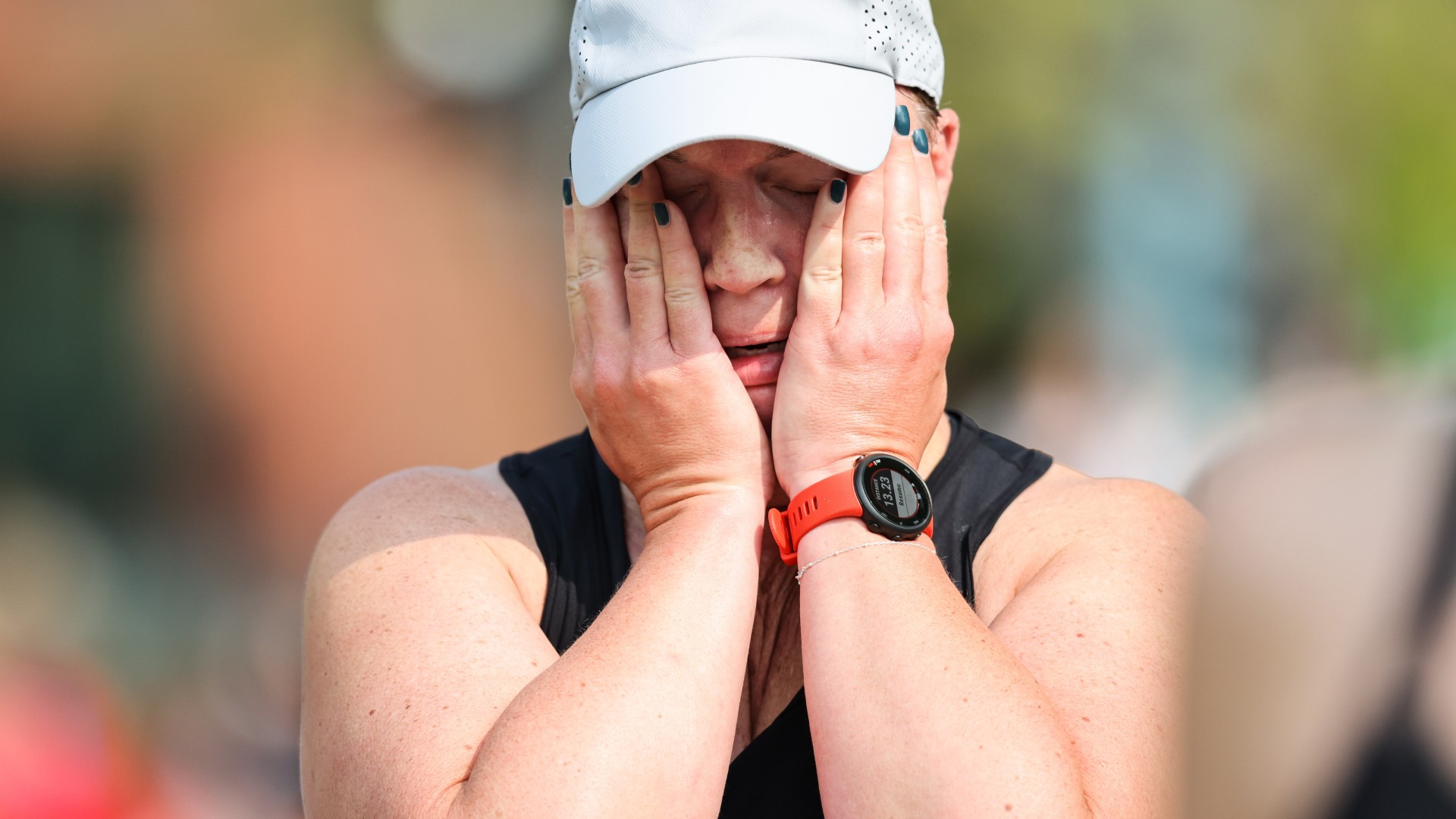What happens when you 'hit the wall'?
Experts tell Live Science what it means to "hit the wall" while exercising and how to avoid it.

You've reached mile 20 (kilometer 32) of your marathon and suddenly a wave of exhaustion crashes over you, making you feel dizzy and causing your legs to feel like lead. One more step seems impossible.
You've likely "hit the wall" — but what does this mean?
Hitting the wall occurs when the body becomes abruptly and debilitatingly tired during exercise, causing people to slow down or stop working out completely.
The condition usually occurs in people who are competing in long-distance, endurance sports, such as cycling, swimming and running. This is because it is caused by a depletion in the body's store of glycogen — a type of glucose that is stored in liver and muscle tissue.
Related: What causes you to get a 'stitch in your side'?
During high-intensity exercise, our muscles use glycogen as a primary energy source by breaking it down into glucose, which powers movement. However, our muscles can only store a certain amount of glycogen. This means that toward the end of a long race, if someone has not replaced that glycogen with food or drink, the body starts running on empty.
For instance, a marathon is 26.2 miles (42.2 km) long. The average person stores around 1,800 calories worth of glycogen in their muscles and will generally burn around 100 calories per mile (1.6 km) that they run. Therefore, one would typically hit the wall around the 18- to 20-mile (29 to 30 km) mark.
Sign up for the Live Science daily newsletter now
Get the world’s most fascinating discoveries delivered straight to your inbox.
Symptoms of hitting the wall include intense exhaustion, muscle cramping and an increase in heart and breathing rate as the body tries to "keep things going," Laura Richardson, a clinical associate professor in applied exercise science and movement science at the University of Michigan, told Live Science.
Some individuals may just need to slow down and walk for a bit, while others have to stop and rest completely, Richardson said. Regardless, everyone must replenish their depleted glycogen store.

Whether and how quickly a person hits the wall can be influenced by many factors, including sex, age and fitness level, Dr. Samuel Dona, a sports medicine physician at the University of Maryland Medical System, told Live Science.
A 2021 study found that in a sample of 928 marathon runners, 28% of men hit the wall versus 17% of women. This could partly be because men are more likely to overestimate their marathon abilities and run too fast initially, the authors concluded.
Professional athletes, like those who compete in Olympic endurance events, are less likely to hit the wall than regular folk. That's because they have more race experience and a better understanding of what formula works best to stop it from happening, Heather Vincent, director of the University of Florida Health Sports Performance Center, told Live Science.
Some of this formula comes down to proper training, such as doing different intensity exercises, from slow walks to hill work, that encourage plenty of variability in heart rate, Richardson said. This trains the body to learn to use fuel at different intensities while strengthening the heart and lungs, she added. Furthermore, increasing mileage slowly helps prevent people from hitting the wall.
Drinking fluids and consuming a carbohydrate-rich diet can also maximize glycogen stores, — a phenomenon known as "carbohydrate loading," Vincent said.
For long races, however, most people will need to replenish glycogen stores with food and drink — something like an energy bar or gel every 30 minutes, Dona said.
This article is for informational purposes only and is not meant to offer medical advice.
Ever wonder why some people build muscle more easily than others or why freckles come out in the sun? Send us your questions about how the human body works to community@livescience.com with the subject line "Health Desk Q," and you may see your question answered on the website!

Emily is a health news writer based in London, United Kingdom. She holds a bachelor's degree in biology from Durham University and a master's degree in clinical and therapeutic neuroscience from Oxford University. She has worked in science communication, medical writing and as a local news reporter while undertaking NCTJ journalism training with News Associates. In 2018, she was named one of MHP Communications' 30 journalists to watch under 30. (emily.cooke@futurenet.com)










